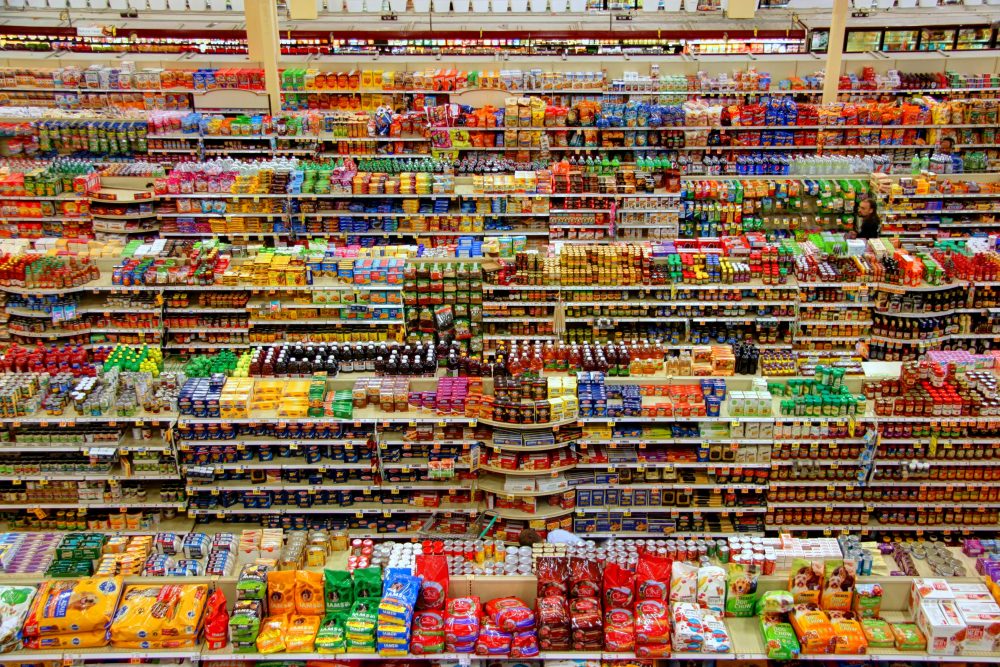
Stores market sugary drinks more heavily during Supplemental Nutrition Assistance Program (SNAP) benefit issuance days, a forthcoming study in the American Journal of Preventive Medicine finds.
SNAP is a program run by the United States federal government to help address food insecurity — limited access to food. The benefit, formerly known as food stamps, offers low-income adults Electronic Benefits Transfer (EBT) cards, a form of debit payment that can be used to purchase groceries at SNAP-authorized retailers. In many states, the benefits are distributed to recipients over one or a few days each month. On average, in fiscal year 2017, enrollees (of which there were over 42 million) received about $125 per person monthly.
Critics of the program sometimes highlight the fact that some SNAP enrollees use their benefits on unhealthy options. A 2016 report from the U.S. Department of Agriculture found that over a year, SNAP households spent slightly more on soft drinks than households that don’t receive SNAP benefits; but it’s worth noting that both types of households spent more money on soft drinks than any other items.
Other research found an association between SNAP participation and obesity and lower diet quality. The same study also found, however, that for adults who had previously experienced food insecurity, SNAP participation was associated with improved nutrition and lower body mass index.
This new study indicates that marketing might be a factor driving SNAP enrollees toward items that contribute to lower diet quality.
The team, led by a researcher at the Harvard School of Public Health, looked at in-store displays, ads and prices of beverages at 630 SNAP-authorized retailers, including gas stations and grocery stores, in three cities in New York in the fall of 2011. Sweetened beverages included soda, sweetened tea, and fruit, sports, and energy drinks. “Because most SNAP benefits are spent within the first week of receipt, retailers may respond by changing marketing to meet anticipated demand,” the authors write.
The stores were visited in person once and the date of the evaluation was noted. The data was then compared to determine whether there were differences in marketing during the benefit issuance period (the first nine days of the month). While not a before-and-after comparison, the data allowed the researchers to compare the marketing strategies of similar stores over time: “Stores assessed during issuance and on other days of the month were similar with regard to retailer and neighborhood characteristics.”
They found:
- On average, stores were 1.88 times more likely to have sugar-sweetened beverage displays during the issuance period compared with the rest of the month and 1.66 times more likely to have ads for sugar-sweetened beverages.
- Stores in neighborhoods with high levels of SNAP enrollment were even more likely to advertise and display sugar-sweetened beverages during the issuance period than stores in neighborhoods with low levels of SNAP enrollment. These neighborhoods were, on average, 4.35 times more likely to have sugar-sweetened beverage displays during issuance days than non-issuance days.
- “SSB marketing was only more prevalent during benefit issuance in neighborhoods with high SNAP enrollment. This statistically significant interaction was present even after controlling for neighborhood poverty, suggesting retailers are responding to the SNAP issuance cycle, rather than secular trends in marketing over the course of the month.” If marketing efforts were pegged to paydays, for example, then these initiatives wouldn’t vary by neighborhood SNAP enrollment levels, the authors suggest.
- During the issuance period, there weren’t differences in marketing for low-calorie or unsweetened beverages. And, despite increased displays and advertisements, the stores didn’t alter the prices of sugar-sweetened beverages during the issuance period.
“This targeted marketing likely increases purchases of SSBs and may at least partially explain disparities in purchasing, consumption and health outcomes by SNAP participation,” the authors conclude. They suggest policy interventions including marketing and display regulations for sugar-sweetened beverages and an extended issuance period to make it harder to target marketing toward SNAP enrollees.
